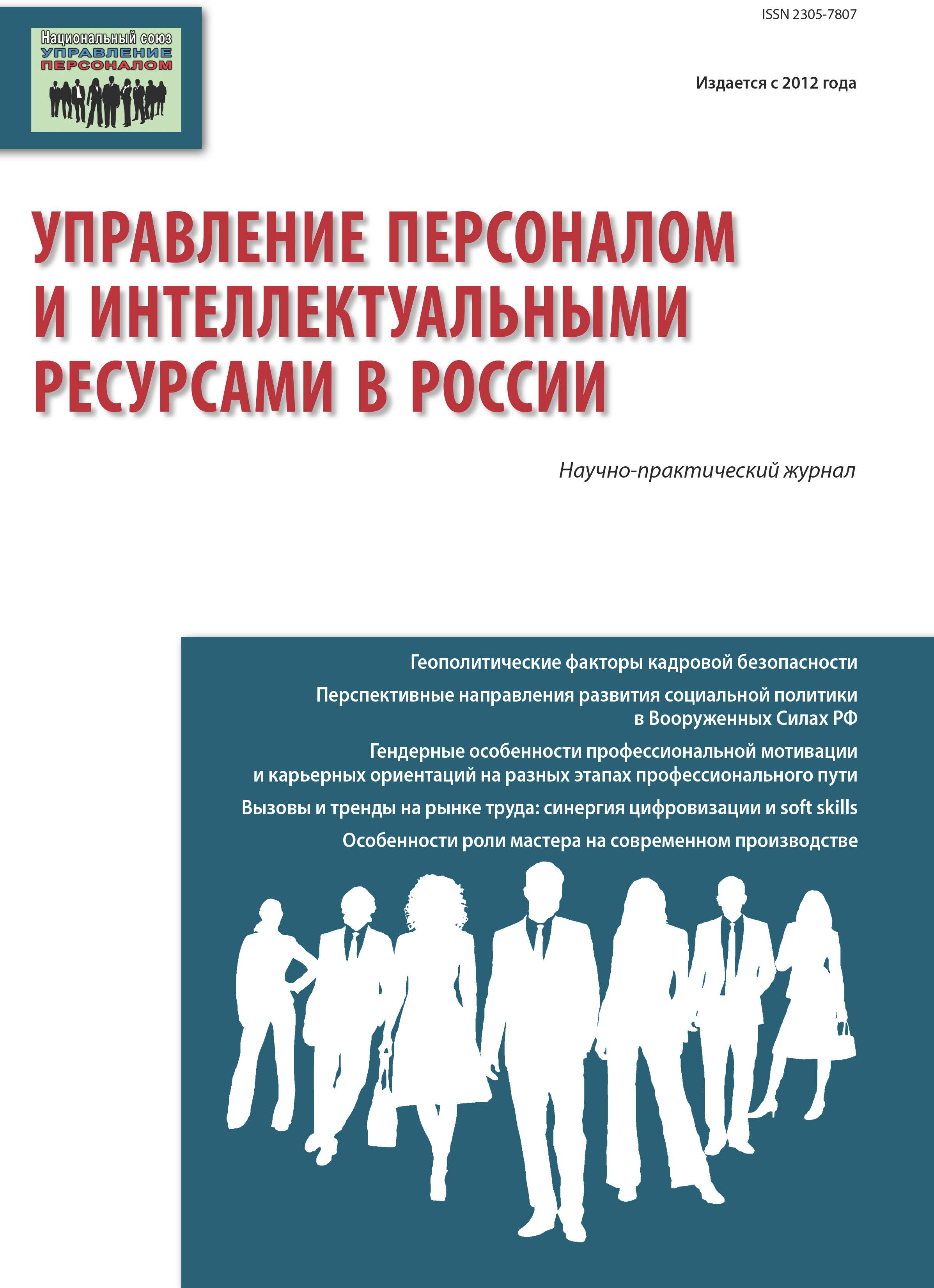В статье предпринята попытка рассмотреть эволюцию научных взглядов на категорию «эффективность труда». Проведен анализ исследований, посвященных определению сущности данного понятия, на основании которого выделены три подхода: производительный, результативный и качественный. Оценены преимущества и недостатки их применения в современных условиях. Автор предлагает рассматривать эффективность труда как многогранное понятие, объединяющее в себе всю совокупность производственных, экономических, социально-психологических, эколого-физических отношений, складывающихся между людьми в процессе трудовой деятельности, которая при минимальных затратах труда обеспечивает получение качественного, востребованного рынком продукта и обеспечивает производителю доход.
труд, эволюция, подход, эффективность, производительность, результативность, качество труда, рабочая сила, результат труда.
RESEARCH RELEVANCE
Against the background of market economy when business activity is always put at risk, all effectiveness increase issues gain primary importance due to the entrepreneurs’ need for the utmost resource saving of production release. Determination of efficiency determines types of products to release, the way of their distribution as well as the volume of resources to be used for the current and future production. It is efficiency that influences the solution of such social problems as increasing living standards of the society, decline in inflation, and improvement of personnel labour and rest conditions.
DEVELOPMENT OF VIEWS ON THE LABOUR EFFICIENCY CATEGORY IN THE NATIONAL SCIENCE
There are many research studies of labour efficiency in contemporary scientific literature, each researcher suggesting their own body of measurement indices that is determined by existing social & economic conditions of public production. Ambiguous interpretation of the labour efficiency category requires explanation of its essence.
All points of view on «labour efficiency» determination are specified in Table 1 for generalization, where we have distinguished five stages of the term transformation.
The first one — « classic» — started its development from establishing efficiency and productive powers by Karl Marx and found further propagation in Soviet Union domestic researchers’ studies [1, 2, 3].
Up to the present day, one can find definition of the core of labour efficiency through its effectiveness. Some consider effectiveness the main measurement of labour efficiency; others consider it the main criterion [5].
Undoubtedly, labour efficiency is one of the most complicated categories in economics.
Academic arguments as to the main point, characteristics, and efficiency of labour have always been in scientists’ focus of attention because key problems of comparison of public production costs and results are touched upon. Discussions regarding cost accounting of not only direct labour, but also the «last» or embodied in things one, laid foundations for the second wave of development of views on labour efficiency. The author of this article believes that productivity of labour is a unity of various, however inseparably associated aspects: the monetary & wealth substance and public mode; separation between direct and embodied labour is very conventional and depends on time and space. If parameters of means of production usage are not taken into account, then relation between labour production index and finance indicator of activity is broken. That is why from a practical standpoint various tasks of labour management and production management require taking into account both direct and embodied types of labour. The third transformation of views is introduction of the term «public labour efficiency» into economics (the term being wider than «labour productivity») and increase in production of excess product can raise labour productivity, but lower its efficiency.
1. Гаврилов Р.В. Производительность труда: показатели планирования и методы измерения. М.: Экономика, 1985.
2. Занин В.И. Производительность труда в промышленности (Актуальные проблемы измерения, анализа и планирования). Новосибирск: Наука, 1977.
3. Карпухин Д.Н. Производительность общественного труда и народнохозяйственные пропорции. М.: Мысль, 1972.
4. Скляренко В.К., Прудников В.М. Экономика предприятия: Учебник. М.: ИНФРА-М, 2008.
5. Лубков А.Н., Сулейманова А.Г. Производительности аграрного труда - важнейший критерий его эффективности // Экономика сельскохозяйственных и перерабатывающих предприятий. 2007. № 11.
6. Генкин Б.М. Экономика и социология труда: Учебник для вузов. 7-е изд., доп. М.: Норма, 2007.
7. Белокопытов А.В. Эффективность использования сельскохозяйственного труда в условиях формирования аграрного рынка (теория, методология, практика): Дис. … д-ра экон. наук. М., 2005.
8. Tang J., Wang W. Sources of aggregate labour productivity growth in Canada and the United States // Canadian Journal Of Economics / Revue Canadienne D’Économique. Vol. 37. Issue 2. May 2004. P. 421-444.
9. Beveren I. Total Factor Productivity Estimation: Practical Review // Journal of Economic Surveys. Vol. 26. Issue 1. Р. 98-128. February 2012.
10. Симонова М.В. Стратегия и механизмы управления качеством рабочей силы на предприятиях стройиндустрии. М.: Креативная экономика, 2008.
11. Князькова В.С. Границы использования понятий «performance», «effect» и «effectiveness» в системах управленческого учета // Актуальные вопросы экономики и управления: материалы междунар. науч. конф. (Москва, апрель 2011 г.). Т. II. М.: ПРИОР, 2011. С. 103-106.
12. Гречникова С.В., Ермаков Г.П. Как оценить рентабельность труда на предприятии? Совершенствование системы оценки экономической эффективности труда в условиях трансформирующейся экономики // Российское предпринимательство. 2011. № 1. Вып. 1 [38-42].






